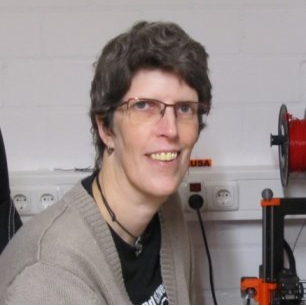3D Printing of MEMS Technology, Volume II
A special issue of Micromachines (ISSN 2072-666X). This special issue belongs to the section "D3: 3D Printing and Additive Manufacturing".
Deadline for manuscript submissions: closed (31 January 2023) | Viewed by 11955
Special Issue Editor
Interests: biopolymers; electrospinning; magnetism; spintronics; optics; dye-sensitized solar cells (DSSCs); smart textiles
Special Issues, Collections and Topics in MDPI journals
Special Issue Information
Dear Colleagues,
3D printing is currently an emerging technology. While it was mostly used for rapid prototyping previously, this technology has long entered rapid production, especially for complicated objects or small lot sizes. Most recently, new 3D printing technologies have emerged that enable the smallest features, at the micro- or even nano-scale, to be printed. At the same time, well-known problems, such as the waviness of fused deposition modeling (FDM) printed parts, the missing long-term stability of some typical printing materials, or the reduced mechanical properties of 3D-printed objects, still exist. The first Special Issue focussing on 3D printing of MEMS technology contains studies on various 3D printing techniques, underlining the possibilities provided by recent technologies. We now welcome the most recent developments in this interdisciplinary research area for the second volume.
Prof. Dr. Andrea Ehrmann
Guest Editor
Manuscript Submission Information
Manuscripts should be submitted online at www.mdpi.com by registering and logging in to this website. Once you are registered, click here to go to the submission form. Manuscripts can be submitted until the deadline. All submissions that pass pre-check are peer-reviewed. Accepted papers will be published continuously in the journal (as soon as accepted) and will be listed together on the special issue website. Research articles, review articles as well as short communications are invited. For planned papers, a title and short abstract (about 100 words) can be sent to the Editorial Office for announcement on this website.
Submitted manuscripts should not have been published previously, nor be under consideration for publication elsewhere (except conference proceedings papers). All manuscripts are thoroughly refereed through a single-blind peer-review process. A guide for authors and other relevant information for submission of manuscripts is available on the Instructions for Authors page. Micromachines is an international peer-reviewed open access monthly journal published by MDPI.
Please visit the Instructions for Authors page before submitting a manuscript. The Article Processing Charge (APC) for publication in this open access journal is 2600 CHF (Swiss Francs). Submitted papers should be well formatted and use good English. Authors may use MDPI's English editing service prior to publication or during author revisions.
Keywords
- 3D-printed nanostructures and nano-composites for application in MEMS lab-on-a-chip devices
- microfluidics, microelectronics, micro-batteries and other energy storage devices
- micro- and nano-sensors and actuators (physical, chemical, and biological)
- challenges and possible solutions of using 3D printing technologies for MEMS
- similar approaches related to 3D printing of MEMS technology
Related Special Issues
- 3D Printing of MEMS Technology in Micromachines (15 articles)
- 3D Printing of MEMS Technology, 3rd Edition in Micromachines (1 article)






